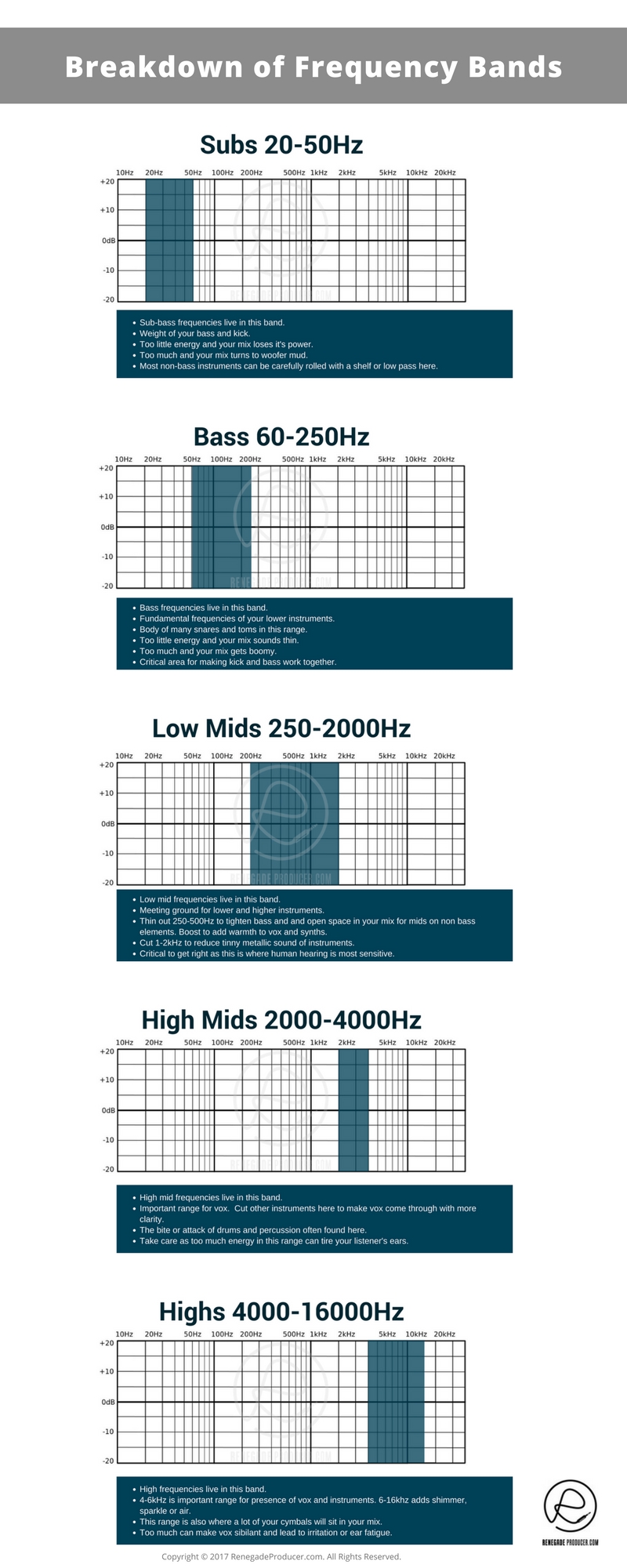25-step music production process checklist and video workshop >>>
Forget Those EQ Frequency Charts, Use This Approach Instead for Better Results With Your Mixes:
You've seen those EQ frequency charts around. You know, the ones with the instruments listed. Snare falls between 100Hz and 10kHz, bass between 30Hz and 3kHz and so on. Seems like they could be really helpful to have around, right?
Well, maybe, but not really.
See, I cannot ever recall actually using such a chart while producing. I can hear and see the frequencies present in the sources I'm working with in my DAW. I guess maybe those colorful, comprehensive charts have been useful to someone, somewhere. I just cannot really figure out quite how and why.
The range taken up by a piano in any mix depends on the notes being played. What does it help us to know that a piano can produce frequencies between 30Hz and 5kHz? All that matters is which frequencies it takes up the in particular mix we're working on.
Now, this on the other hand...
One can safely ignore the frequency charts mentioned.
What can be helpful is to instead split your frequency range up into different key areas or bands and focus on each of these separately as you mix.
Filters can be used to isolate the band you want to focus on and frequency analyzers such as the free Voxengo Span allow you to visualize what's happening in each band.
Check the image below to see one way of splitting up the frequency spectrum.

Step-by-step method:
- Bounce your track down.
- Open a reference track you want to match in the same session.
- Insert a good EQ on each track followed by an analyzer.
- Isolate the first band with your EQ, the same on both tracks.
- Play the reference. Take notes.
- Play your track. Notice the differences. Take notes.
- Adjust the EQ to the next frequency band. Go back to step 5.
- Continue until you've checked all the bands.
- Go back to your mix session and adjust according to your notes.
Now you can go much more scientific with the process. You don't have to bounce down. You can split the frequency bands different to the ones mentioned in the chart if that makes sense for the material you tend to work on most. The main idea is to work through the main bands or octaves of frequencies separate to create a balance that works for your track.
This approach makes it easier to identify which elements or instruments are causing issues and pinpoint where the problems lay.
No rainbow EQ frequency chart needed!


Learn to understand equalisers and frequencies to supercharge your mixing skills and get results, fast...

New producer? Learn everything you need to produce your first professional track right now...

Would you like to discover the simplest and easiest way to learn music theory as a music producer?
Share this post. Spread the knowledge so other producers can benefit too:
- Renegade Producer
- Music Production
- EQ Charts
ⓘ Some pages contain affiliate links so I might earn a commission when you buy through my links. Thanks for your support! Learn more

